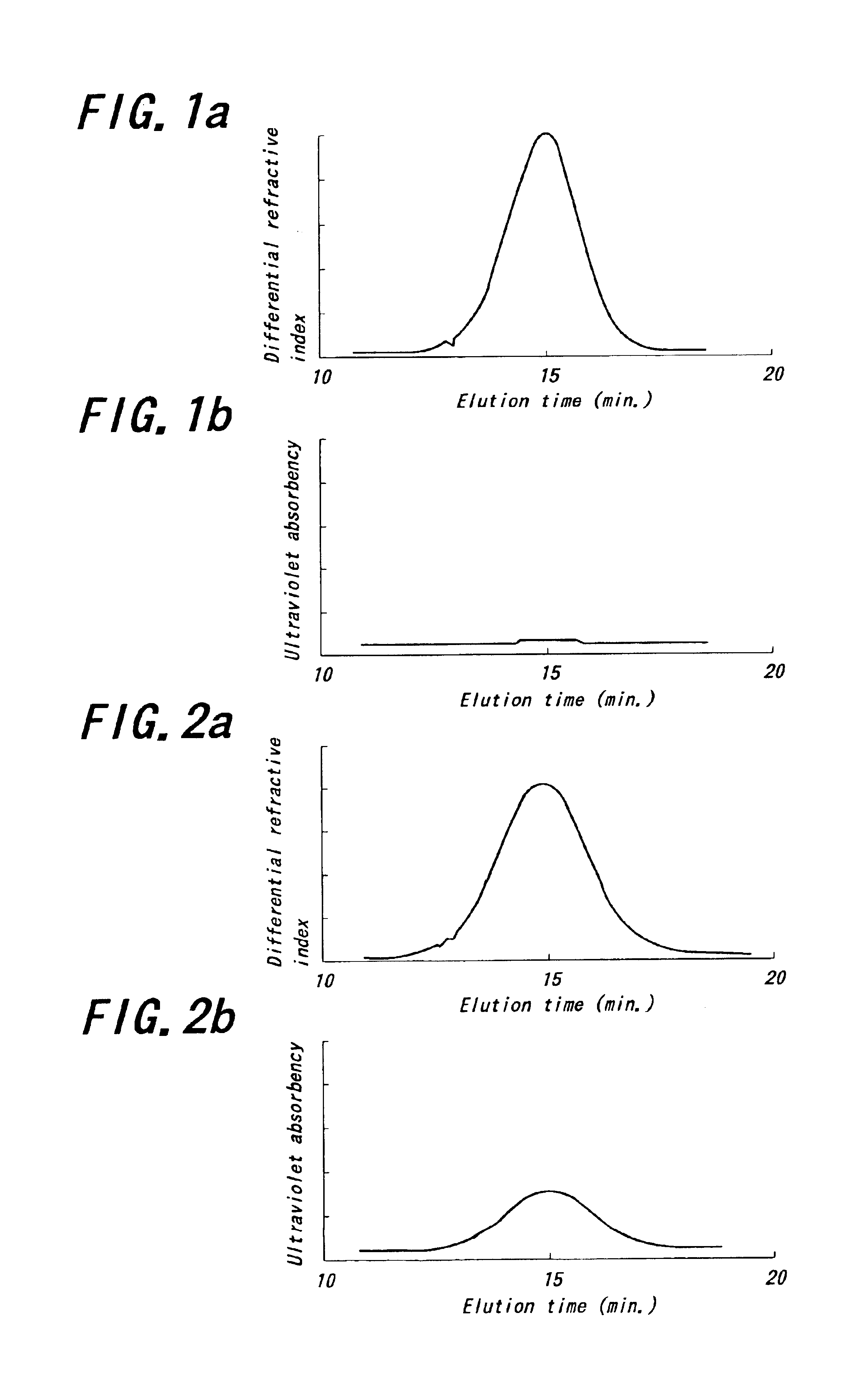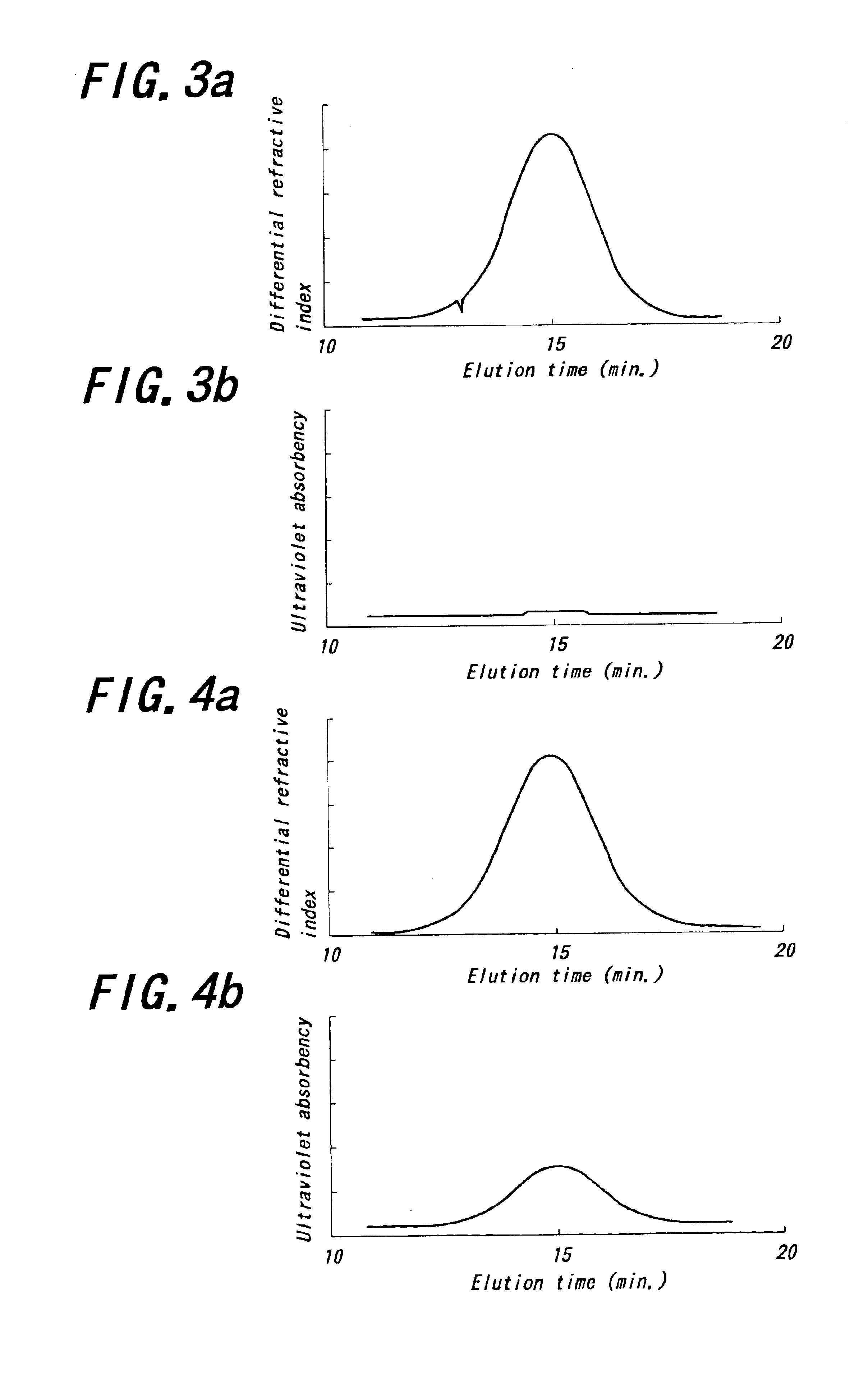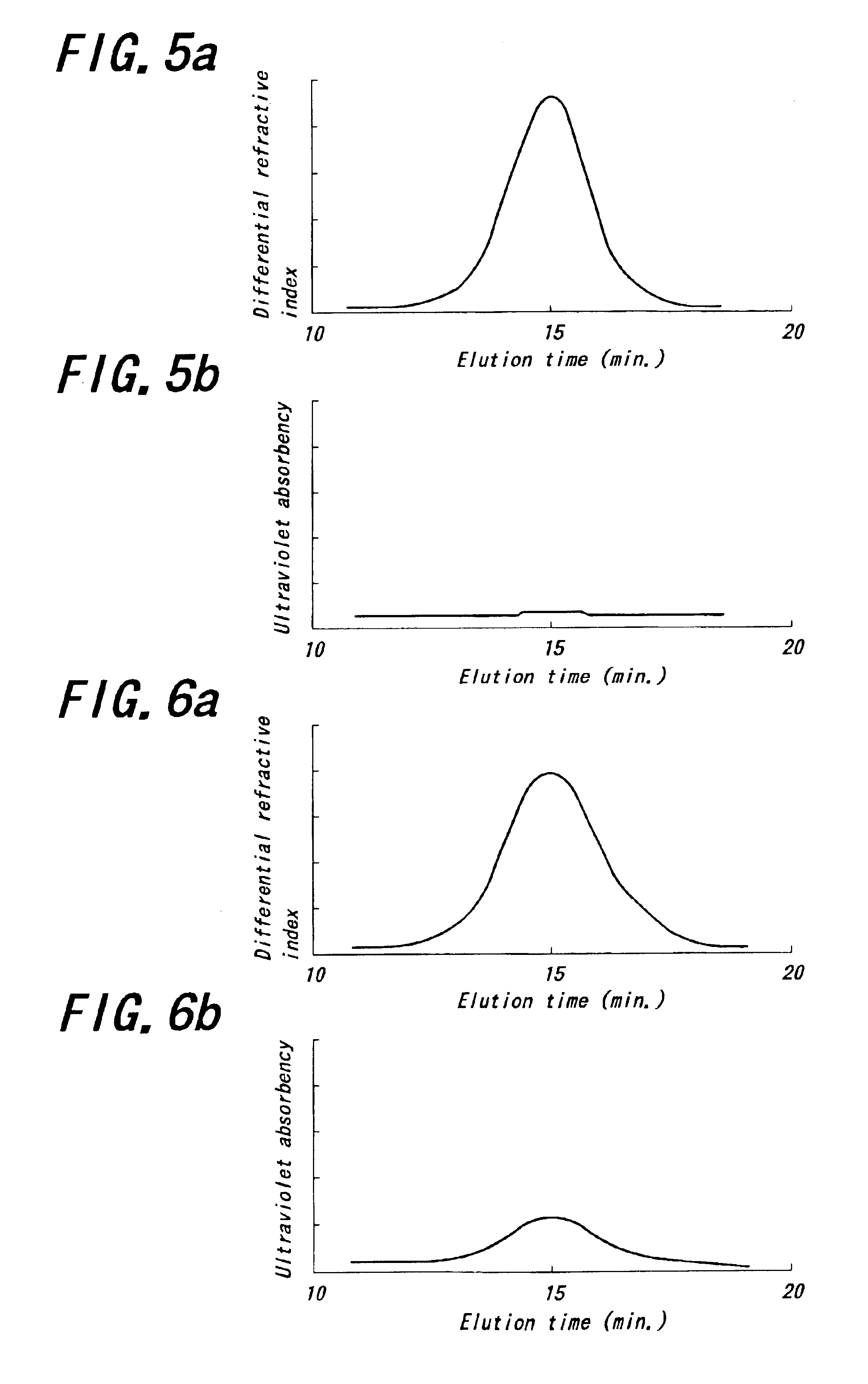Modified conjugated diene polymer and method of producing the same and rubber composition
- Summary
- Abstract
- Description
- Claims
- Application Information
AI Technical Summary
Benefits of technology
Problems solved by technology
Method used
Image
Examples
example 1
Into an autoclave of 5 liter in capacity purged with nitrogen are charged 2.4 kg of cyclohexane and 300 g of 1,3-butadiene in a nitrogen atmosphere. Into the resulting mixture is charged a catalyst obtained by previously mixing a cyclohexane solution of neodymium versatate (herein-after abbreviated as Nd(ver)3) (0.09 mmol), a toluene solution of methyl-aluminoxane (hereinafter abbreviated as MAO) (7.2 mmol), hydrogenated diisobutylaluminum (hereinafter abbreviated as AliBu2H) (3.6 mmol) and a toluene solution of a diethylaluminum chloride (hereinafter abbreviated as DEAC) (0.18 mmol) as a catalyst component and maturating them with an amount of 1,3-butadiene corresponding to 5 times of neodymium amount at 50° C. for 30 minutes to conduct polymerization at 80° C. for 60 minutes. The reaction conversion of 1,3-butadiene is approximately 100%.
Then, the resulting polymer solution is kept at a temperature of 50° C. and added and reacted with 2,3-dichloro-1,4-naphthoquinone (4.5 mmol) for...
example 2
A polymer is obtained in the same manner as in Example 1 except that 2-(4-morpholinodithio) benzothiazole is used instead of 2,3-dichloro-1,4-naphthoquinone. The polymerization conditions and analytical results are shown in Table 1.
example 3
A polymer is obtained in the same manner as in Example 1 except that N-oxydiethylene-2-benzothiazole sulfenamide is used instead of 2,3-dichloro-1,4-naphthoquinone. The polymerization conditions and analytical results are shown in Table 1.
PUM
| Property | Measurement | Unit |
|---|---|---|
| Fraction | aaaaa | aaaaa |
| Percent by mass | aaaaa | aaaaa |
| Percent by mass | aaaaa | aaaaa |
Abstract
Description
Claims
Application Information
 Login to View More
Login to View More - R&D
- Intellectual Property
- Life Sciences
- Materials
- Tech Scout
- Unparalleled Data Quality
- Higher Quality Content
- 60% Fewer Hallucinations
Browse by: Latest US Patents, China's latest patents, Technical Efficacy Thesaurus, Application Domain, Technology Topic, Popular Technical Reports.
© 2025 PatSnap. All rights reserved.Legal|Privacy policy|Modern Slavery Act Transparency Statement|Sitemap|About US| Contact US: help@patsnap.com



